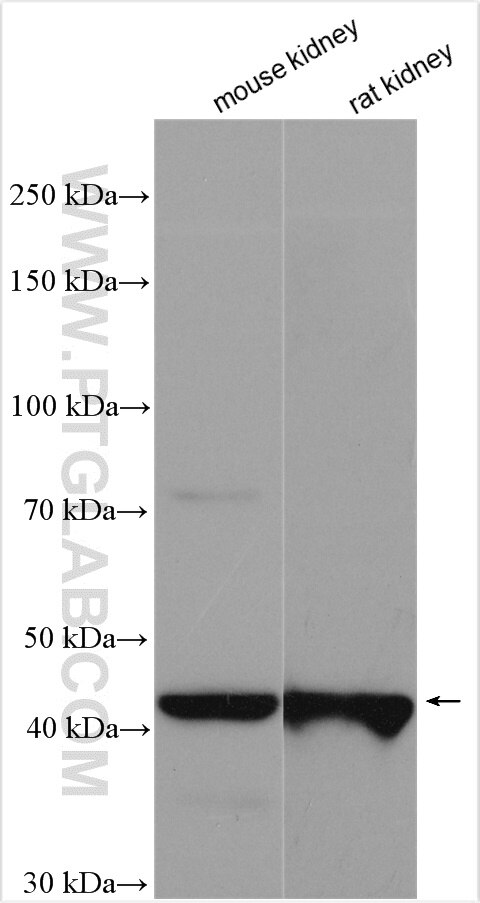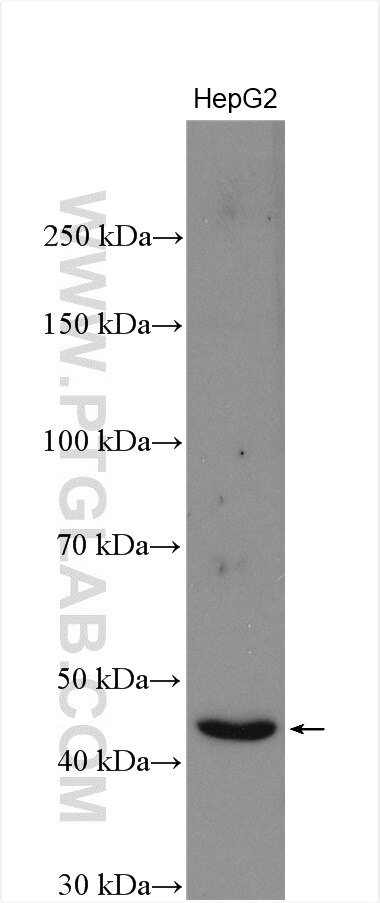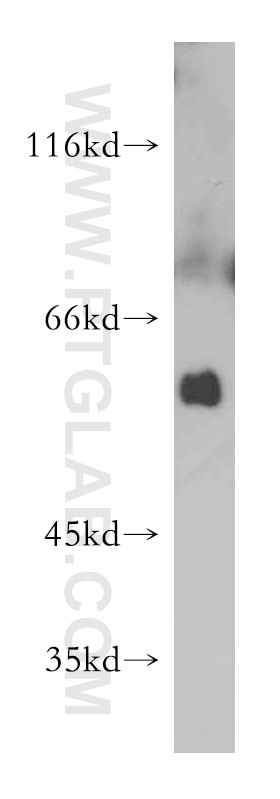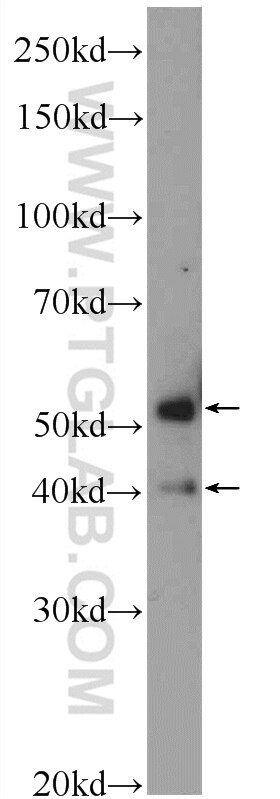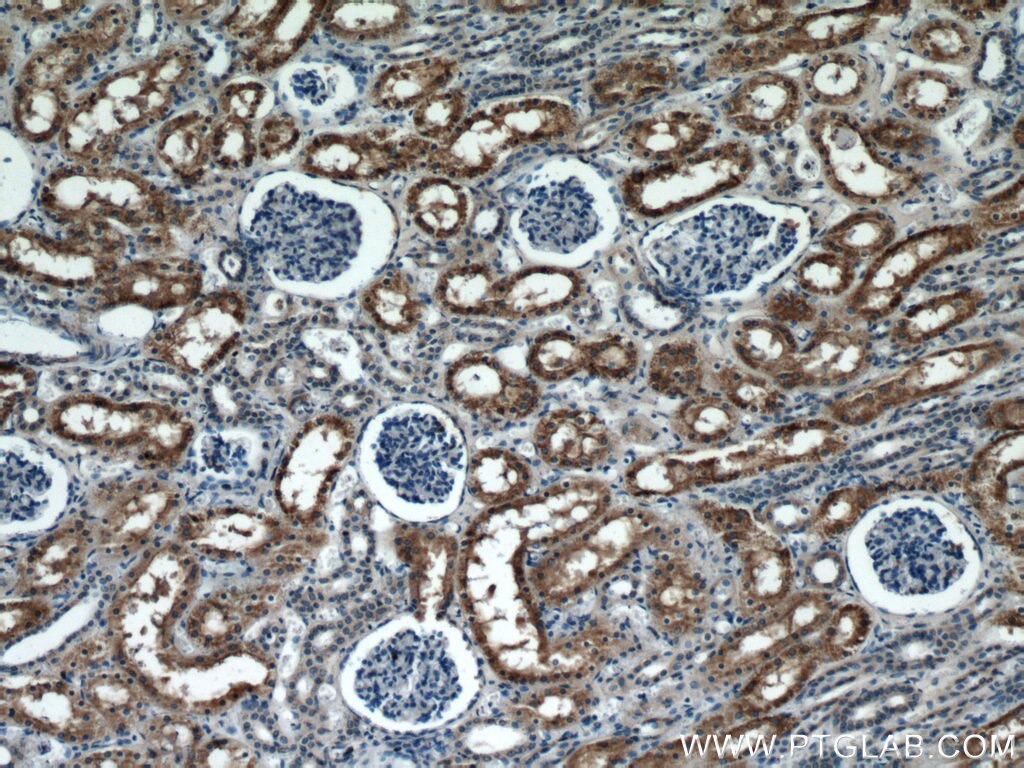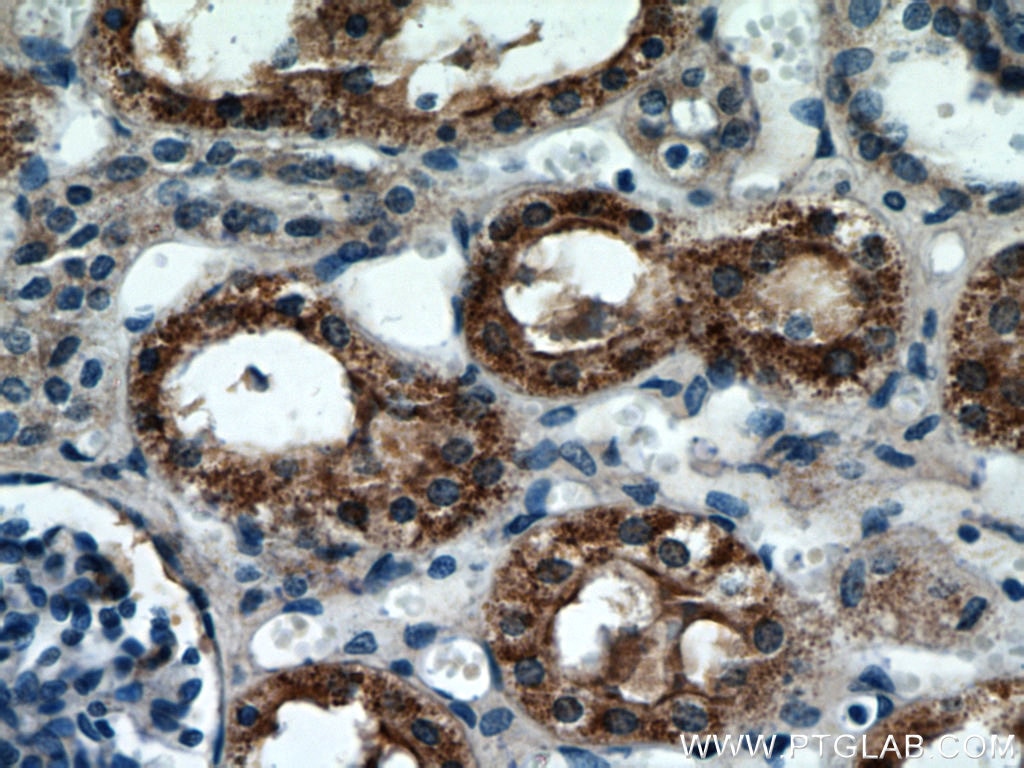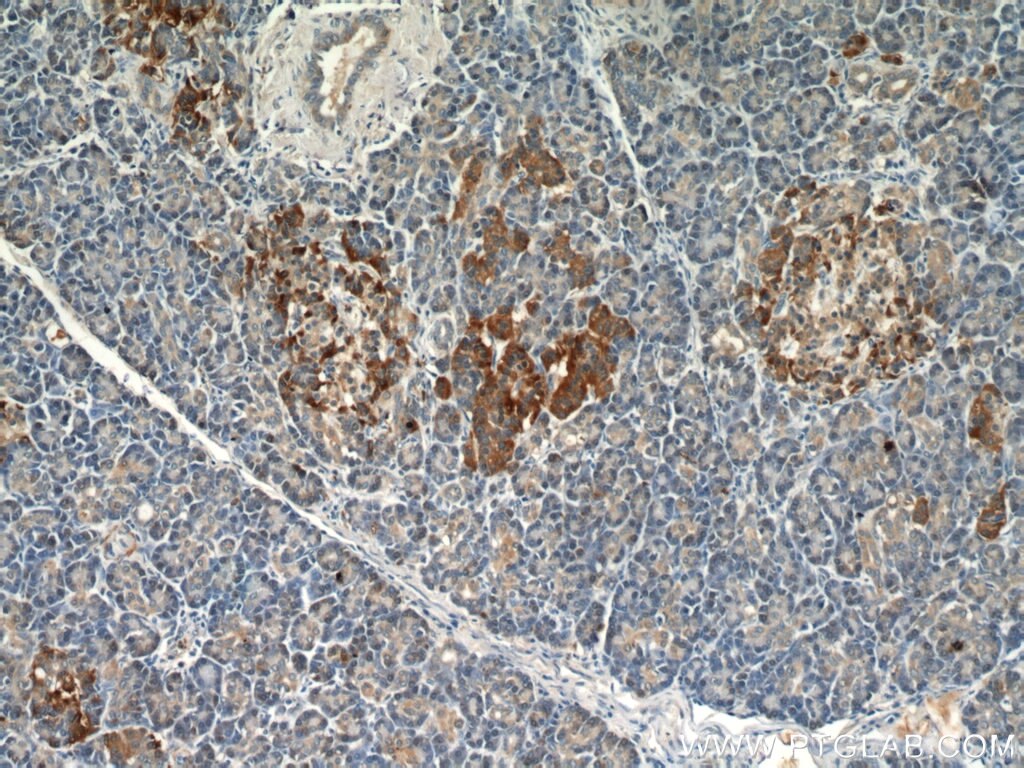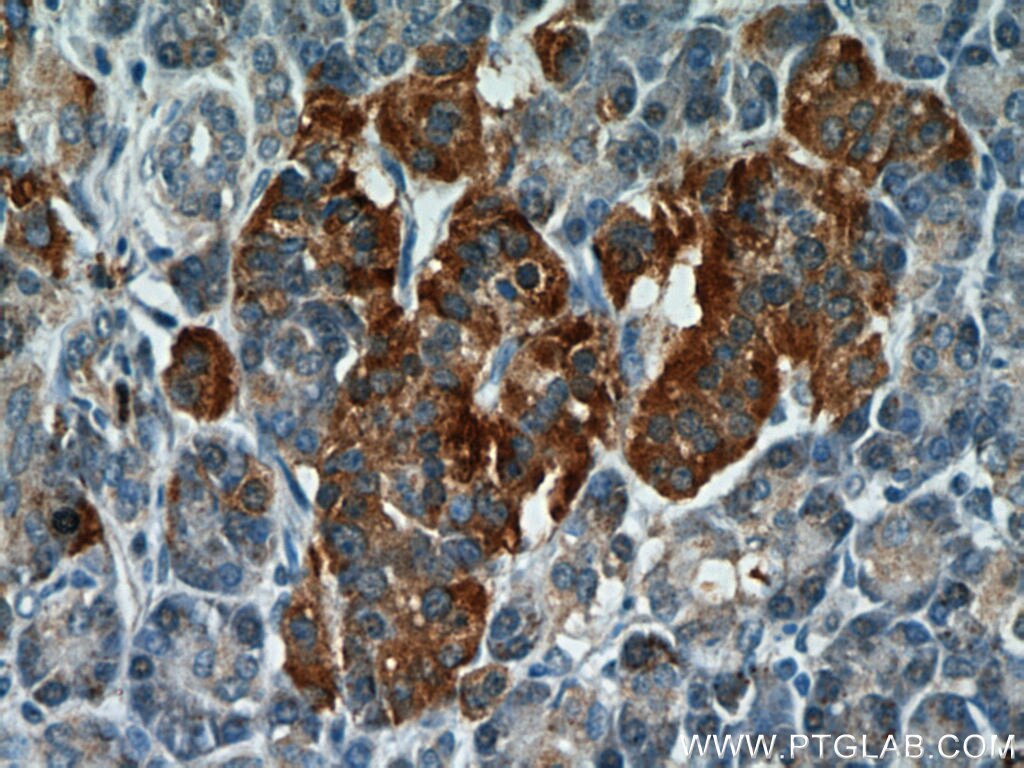Anticorps Polyclonal de lapin anti-C7orf10
C7orf10 Polyclonal Antibody for WB, IHC, ELISA
Hôte / Isotype
Lapin / IgG
Réactivité testée
Humain, rat, souris
Applications
WB, IHC, ELISA
Conjugaison
Non conjugué
N° de cat : 21589-1-AP
Synonymes
Galerie de données de validation
Applications testées
| Résultats positifs en WB | tissu rénal de souris, cellules HEK-293, cellules HepG2, tissu de muscle squelettique de souris, tissu pancréatique de souris, tissu rénal de rat |
| Résultats positifs en IHC | tissu rénal humain, tissu pancréatique humain il est suggéré de démasquer l'antigène avec un tampon de TE buffer pH 9.0; (*) À défaut, 'le démasquage de l'antigène peut être 'effectué avec un tampon citrate pH 6,0. |
Dilution recommandée
| Application | Dilution |
|---|---|
| Western Blot (WB) | WB : 1:1000-1:4000 |
| Immunohistochimie (IHC) | IHC : 1:20-1:200 |
| It is recommended that this reagent should be titrated in each testing system to obtain optimal results. | |
| Sample-dependent, check data in validation data gallery | |
Applications publiées
| WB | See 3 publications below |
Informations sur le produit
21589-1-AP cible C7orf10 dans les applications de WB, IHC, ELISA et montre une réactivité avec des échantillons Humain, rat, souris
| Réactivité | Humain, rat, souris |
| Réactivité citée | Humain, souris |
| Hôte / Isotype | Lapin / IgG |
| Clonalité | Polyclonal |
| Type | Anticorps |
| Immunogène | C7orf10 Protéine recombinante Ag16159 |
| Nom complet | chromosome 7 open reading frame 10 |
| Masse moléculaire calculée | 471 aa, 51 kDa |
| Poids moléculaire observé | 48-55 kDa |
| Numéro d’acquisition GenBank | BC098318 |
| Symbole du gène | C7orf10 |
| Identification du gène (NCBI) | 79783 |
| Conjugaison | Non conjugué |
| Forme | Liquide |
| Méthode de purification | Purification par affinité contre l'antigène |
| Tampon de stockage | PBS with 0.02% sodium azide and 50% glycerol |
| Conditions de stockage | Stocker à -20°C. Stable pendant un an après l'expédition. L'aliquotage n'est pas nécessaire pour le stockage à -20oC Les 20ul contiennent 0,1% de BSA. |
Informations générales
C7orf10 is also named as SUGCT, DERP13 and belongs to the CaiB/BaiF CoA-transferase family. It may function as part of a multiunit enzyme complex (A), similar to the alpha-ketoglutarate dehydrogenase system, or as the second of two independent enzymes, the first of which decarboxylates alpha-ketoadipate to glutarate (B). This protein has 4 isoforms produced by alternative splicing with the molecular weight from 43 kDa to 51 kDa.
Protocole
| Product Specific Protocols | |
|---|---|
| WB protocol for C7orf10 antibody 21589-1-AP | Download protocol |
| IHC protocol for C7orf10 antibody 21589-1-AP | Download protocol |
| Standard Protocols | |
|---|---|
| Click here to view our Standard Protocols |
Publications
| Species | Application | Title |
|---|---|---|
Cell Mol Life Sci Knockout of the non-essential gene SUGCT creates diet-linked, age-related microbiome disbalance with a diabetes-like metabolic syndrome phenotype. | ||
bioRxiv Odd-chain dicarboxylic acid feeding recapitulates the biochemical phenotype of glutaric aciduria type 1 in mice | ||
Front Aging Neurosci A Y374X TDP43 truncation leads to an altered metabolic profile in amyotrophic lateral sclerosis fibroblasts driven by pyruvate and TCA cycle intermediate alterations |
